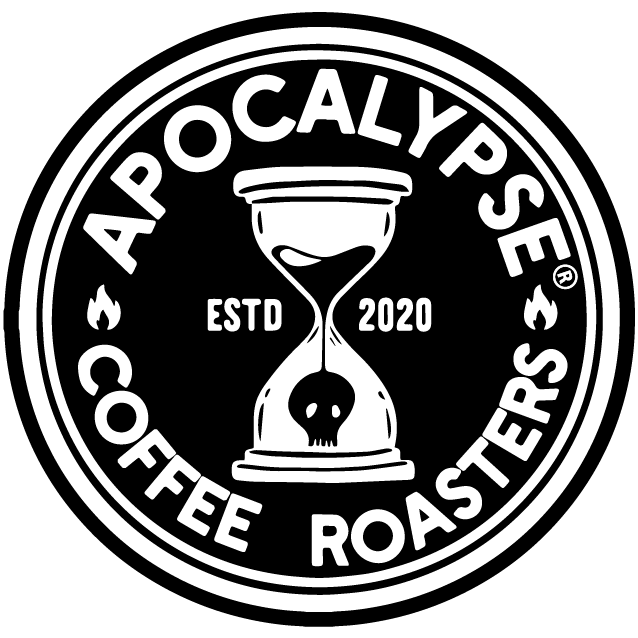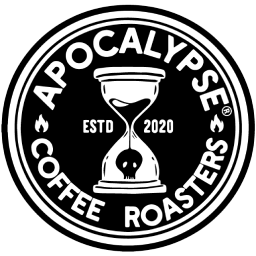When the world ends, you can bet coffee lovers will still be brewing their favorite drinks. No power? No problem if you've discovered cold brew. Whether stocking your bunker or looking for the smoothest, most refreshing caffeine fix, cold brew coffee is the ultimate survival drink. Ready to dive into the perfect end-of-day brew method? Let’s go!
What Is Cold Brew Coffee?
Cold brew coffee isn’t just a trend, and it's more than just "cold coffee." It’s a method that predates you and me. Unlike traditional hot coffee, cold brew uses time—not heat—to bring out the flavors. You can make it by steeping fresh, coarsely ground coffee beans in cold water for 12-24 hours (more on that below!), and you'll get a smooth, slightly sweet brew with less bitterness and acidity. The slow extraction process means you get a cup of coffee that’s mellow and naturally full of flavor.
Cold Brew vs. Iced Coffee
At first glance, cold brew and iced coffee may look the same, but while they may seem similar they’re made in totally different ways.
Brew Method
Cold brew is made by steeping coarse coffee grounds in cold water for up to a day. The slow brewing process gives you a smooth coffee that’s naturally sweet. It’s like letting the coffee take its time, which brings out a rich flavor without any bitterness. It's also stronger, so you get more caffeine in every sip.
On the other hand, iced coffee is simply regular hot brewed coffee that’s been brewed and cooled, then poured over ice. It’s a quicker process, but the coffee doesn’t have as much time to mellow out. Iced coffee tends to taste more bitter because of the heat used in brewing. It’s a great option if you need a quick coffee fix and don’t mind the extra acidity.
Flavor & Acidity
Cold brew is naturally less acidic, offering a smoother taste, whereas iced coffee, brewed hot and then chilled, can have a sharper, more acidic flavor.
Caffeine Levels
Cold brew tends to have more caffeine than iced coffee, especially since it’s often brewed at a higher concentration.
Price
Yes, cold brew often costs more at cafes, but it’s not just a marketing gimmick. The longer brewing time and higher volume of coffee beans used for cold brew contribute to its higher price tag.
Benefits of Cold Brew Coffee
If you’re still on the fence about making cold brew your new favorite, here are a few benefits to this chilled drink. It has a smoother taste, making it perfect for those who aren’t fans of coffee’s harsher flavors. Lower acidity makes it easier on your stomach. Cold brew is super convenient—you can make a batch and keep it fresh for up to two weeks, which is great for busy mornings. And for those who need an extra kick, cold brew delivers a caffeine boost, since it’s brewed stronger.
Read more on the Powerful Health Benefits of Drinking Coffee Everyday.
How Long Does Cold Brew Last?
Wondering how long you can keep that cold brew sitting in the fridge? Once made, cold brew can last up to 10-14 days when properly stored. However, it’s best consumed within the first week for optimal flavor. After the first few days, it may start to lose its signature smoothness and develop a more bitter edge. But, don’t worry—just taste it and you’ll know when it’s time to brew a fresh batch.
How To Make Cold Brew Coffee at Home
Making cold brew at home is easier than you think. Here’s a simple guide:
1. Choose your coffee. Go for dark or medium roast coarsely ground coffee beans.
2. Mix a ratio of 1 cup of coffee to 4 cups of water. You can adjust the ratio for a stronger or weaker brew.
3. Let the coffee sit in cold water for at least 12 hours. The longer you steep, the stronger the brew.
4. Use a fine mesh sieve or a coffee filter to remove the grounds.
5. Pour your cold brew concentrate into a bottle or jar and refrigerate.
For a milder drink, dilute the concentrate with water, milk, or a non-dairy alternative before serving.
What’s the Best Type of Coffee for Cold Brew Espresso?
Not all coffee beans are created equal when it comes to cold brew. You’ll want to choose a medium or dark roast. These types of beans deliver a richer, more robust flavor that pairs perfectly with the cold brewing process. Avoid light roasts, which can taste too acidic or sour. Also, use coarsely ground beans. Finer grounds can make your cold brew cloudy and overly bitter.
Can I Drink Cold Brew Coffee Hot?
Absolutely! You can either warm it on the stove or mix it with hot water for a smoother, less acidic cup of joe. But remember, heating cold brew won’t give it the same taste as freshly brewed hot coffee—it’ll still be less bitter with a milder flavor.
What Is Nitro Cold Brew Coffee?
If you’ve been to a specialty coffee shop, you’ve likely seen nitro cold brew on the menu. But what exactly is it? Nitro cold brew is cold brew coffee infused with nitrogen gas, served on tap. This process gives it a creamy, frothy texture that’s surprisingly smooth. It’s typically served without ice, which keeps the drink concentrated and packed with flavor. If you love your coffee cold and creamy, nitro is definitely worth a try!
Whether you’re gearing up for the apocalypse or just trying to survive your 9-to-5 grind, cold brew coffee can be the key to survival. Order an Apocalypse Coffee Bundle to keep your caffeine stockpile fresh and ready for whatever the future holds—because when the world ends, you'll need the best coffee to make it through.








